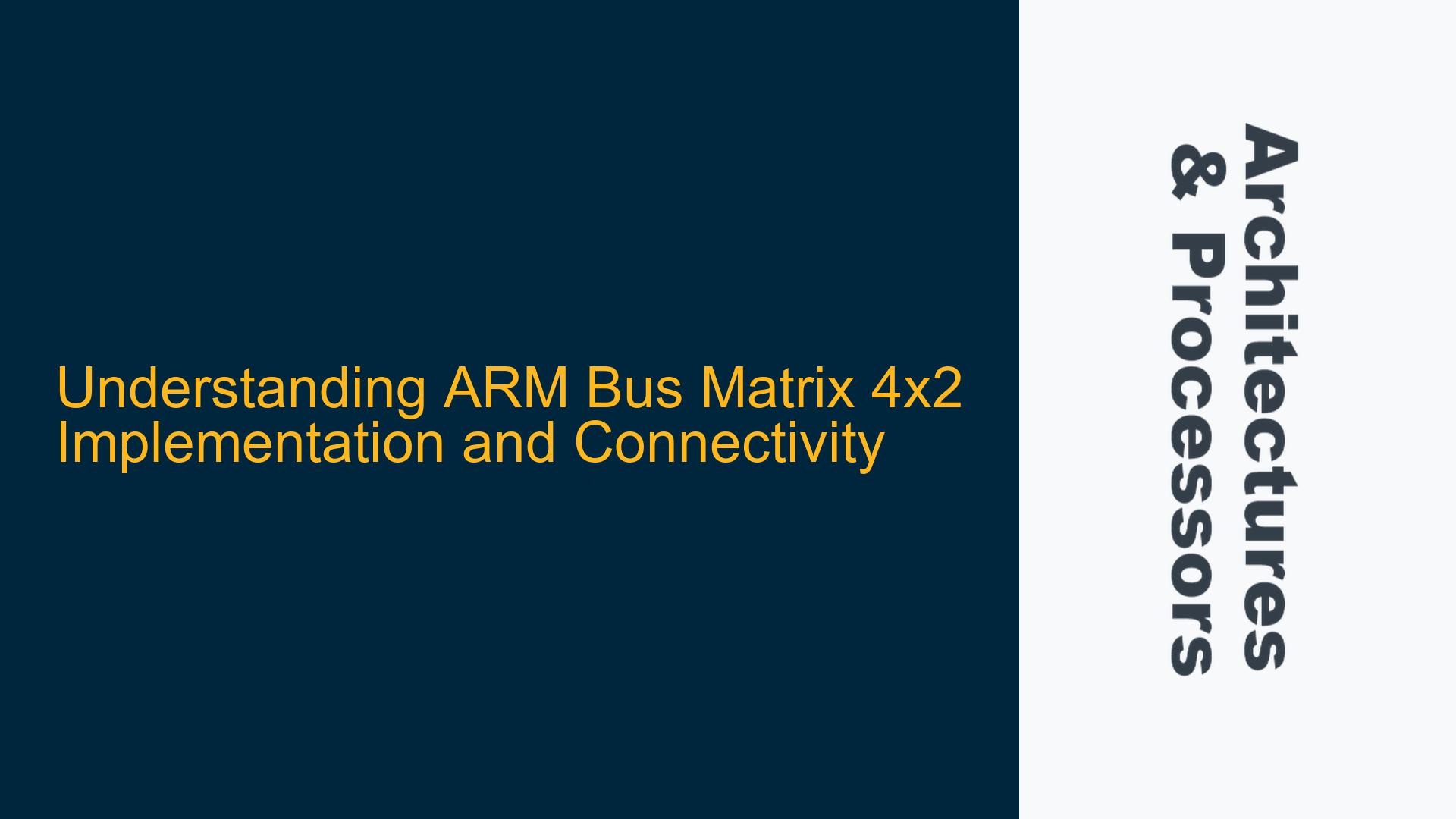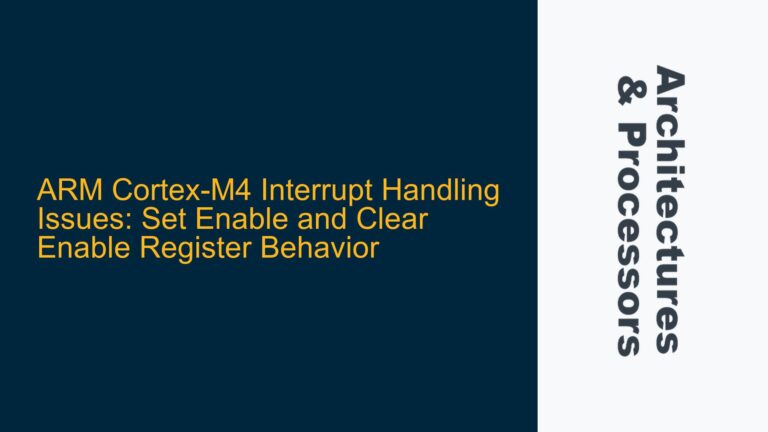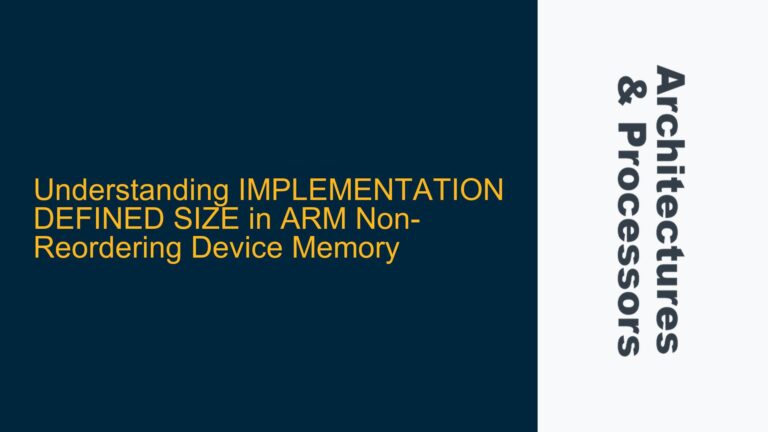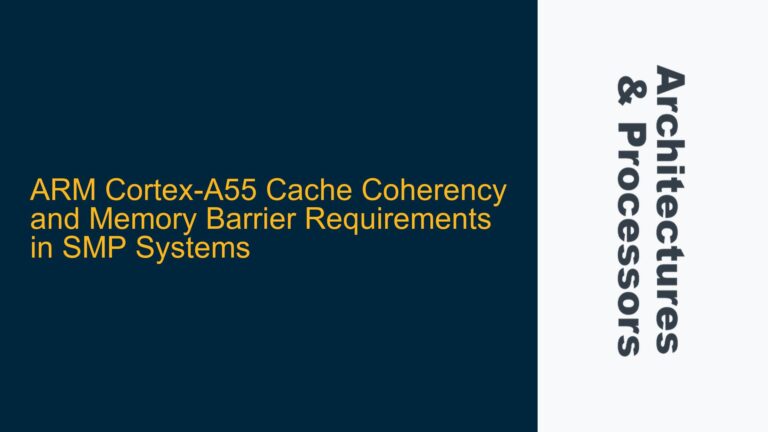ARM Cortex-M Bus Matrix 4×2 Architecture and Internal Connectivity
The ARM Cortex-M series of processors often utilize a bus matrix to manage data flow between multiple masters and slaves within the system. A 4×2 bus matrix, as referenced in the discussion, is a specific configuration where four master ports and two slave ports are interconnected. This architecture is designed to facilitate efficient data transfer and arbitration between multiple peripherals, memory units, and the processor core.
The bus matrix is a critical component in ARM-based microcontrollers, enabling concurrent access to different memory regions and peripherals. The 4×2 configuration implies that there are four master devices (such as the Cortex-M core, DMA controllers, or other bus masters) and two slave devices (such as flash memory, SRAM, or peripherals). The matrix allows these masters to access the slaves simultaneously, provided there are no conflicts.
The internal connectivity of the bus matrix is governed by a set of rules and protocols that ensure data integrity and efficient arbitration. Each master port is connected to all slave ports through a series of multiplexers and arbiters. The arbitration logic determines which master gets access to a slave port when multiple masters attempt to access the same slave simultaneously. This is typically managed using a priority-based system, where higher-priority masters are granted access first.
The external connectivity of the bus matrix involves the physical connections to the master and slave devices. Each master device is connected to a master port on the bus matrix, and each slave device is connected to a slave port. The bus matrix acts as an intermediary, routing data between the masters and slaves based on the arbitration rules.
Understanding the internal and external connectivity of the bus matrix is crucial for optimizing system performance. Misconfigurations or misunderstandings of the bus matrix can lead to bottlenecks, where high-priority masters are starved of access to critical resources. Additionally, improper handling of the arbitration logic can result in data corruption or loss.
Potential Misconfigurations and Arbitration Issues in Bus Matrix 4×2
One of the primary challenges in implementing a 4×2 bus matrix is ensuring that the arbitration logic is correctly configured. The arbitration logic determines the priority of each master and ensures that conflicts are resolved in a fair and efficient manner. However, if the arbitration logic is not properly set up, it can lead to several issues.
One common issue is priority inversion, where a low-priority master is granted access to a slave port while a high-priority master is waiting. This can occur if the arbitration logic is not correctly prioritizing the masters or if there are bugs in the arbitration algorithm. Priority inversion can lead to significant performance degradation, as high-priority tasks may be delayed by lower-priority tasks.
Another potential issue is deadlock, where two or more masters are waiting for each other to release access to a slave port. This can occur if the arbitration logic does not properly handle cases where multiple masters are competing for the same resource. Deadlock can cause the entire system to freeze, as the masters are unable to proceed with their tasks.
In addition to arbitration issues, misconfigurations in the bus matrix can also lead to data corruption. For example, if the bus matrix is not correctly configured to handle burst transfers, it may split a burst transfer into multiple single transfers, leading to data corruption. Similarly, if the bus matrix is not correctly configured to handle different data widths, it may truncate or pad data, leading to incorrect results.
Another potential issue is the improper handling of cache coherency in systems that include a cache. If the bus matrix is not correctly configured to manage cache coherency, it may lead to stale data being read from the cache or incorrect data being written to memory. This can be particularly problematic in systems that use DMA, where the DMA controller may be accessing memory directly without going through the cache.
Optimizing Bus Matrix 4×2 Configuration and Troubleshooting Common Issues
To optimize the configuration of a 4×2 bus matrix and troubleshoot common issues, it is essential to follow a systematic approach. The first step is to thoroughly understand the architecture of the bus matrix and the specific requirements of the system. This includes understanding the priority levels of each master, the types of transfers that will be performed, and the potential conflicts that may arise.
One of the key steps in optimizing the bus matrix configuration is to correctly set up the arbitration logic. This involves assigning appropriate priority levels to each master and ensuring that the arbitration algorithm is correctly implemented. It is also important to test the arbitration logic under various scenarios to ensure that it handles conflicts correctly and does not lead to priority inversion or deadlock.
Another important step is to ensure that the bus matrix is correctly configured to handle different types of transfers. This includes configuring the bus matrix to handle burst transfers, different data widths, and cache coherency. It is also important to ensure that the bus matrix is correctly configured to handle any specific requirements of the peripherals and memory units in the system.
In addition to configuring the bus matrix, it is also important to monitor its performance and identify any potential bottlenecks. This can be done using performance counters or other monitoring tools that provide insight into the behavior of the bus matrix. By analyzing the performance data, it is possible to identify any areas where the bus matrix may be causing delays or conflicts and take steps to optimize its configuration.
When troubleshooting issues with the bus matrix, it is important to start by identifying the symptoms of the problem. This may include performance degradation, data corruption, or system freezes. Once the symptoms have been identified, the next step is to trace the issue back to its root cause. This may involve analyzing the arbitration logic, checking the configuration of the bus matrix, or testing the system under different scenarios.
One common troubleshooting technique is to use a logic analyzer or other debugging tools to capture the behavior of the bus matrix in real-time. This can provide valuable insight into how the bus matrix is handling transfers and whether there are any conflicts or bottlenecks. By analyzing the captured data, it is often possible to identify the root cause of the issue and take steps to resolve it.
In some cases, it may be necessary to modify the configuration of the bus matrix or the arbitration logic to resolve the issue. This may involve changing the priority levels of the masters, modifying the arbitration algorithm, or adjusting the configuration of the bus matrix to better handle specific types of transfers. It is important to thoroughly test any changes to ensure that they do not introduce new issues or exacerbate existing ones.
In conclusion, the 4×2 bus matrix is a powerful and flexible architecture that enables efficient data transfer between multiple masters and slaves in an ARM-based system. However, it is also a complex component that requires careful configuration and monitoring to ensure optimal performance. By understanding the architecture of the bus matrix, correctly configuring the arbitration logic, and systematically troubleshooting any issues, it is possible to optimize the performance of the bus matrix and ensure reliable operation of the system.






